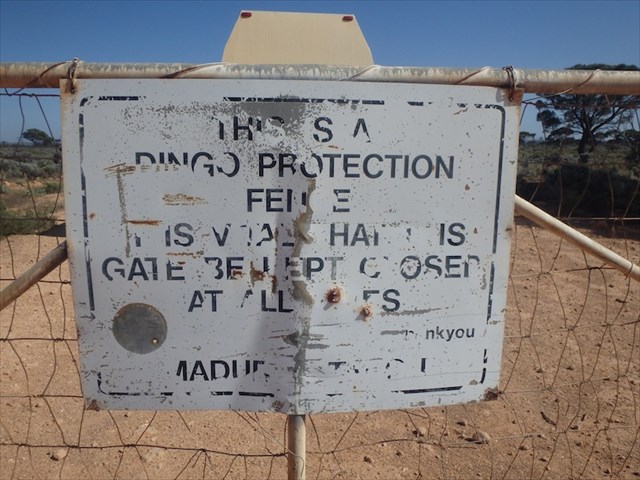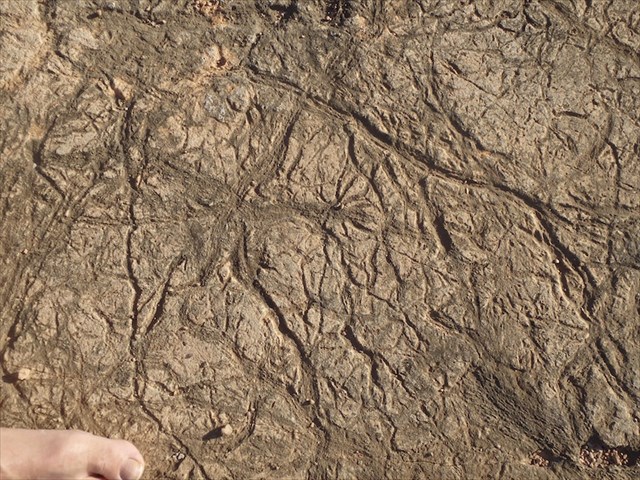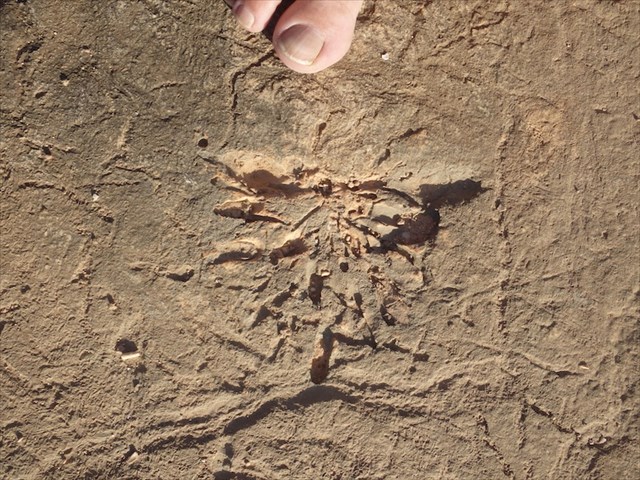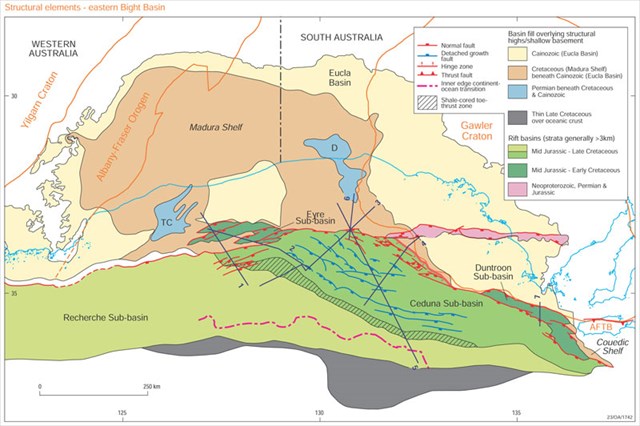2WD is ok when it’s dry. It is 15km along a formed dirt road and may be unsuitable for some caravans.
Turnoff Eyre Hwy at S31 54.225 E127 01.929
Go through the Dingo Protection Fence gate at S31 59.267 E127 01.867. Please SHUT THE GATE even if it has been left open. Lift the gate a little to latch it.

This earth cache, OUR ANCIENT SEA BED, is located on the Madura Shelf. The exposed area is 0.1228 square km or 122764 square metres. That’s 12 hectares or nearly 35 acres.
The Nullarbor Plain is a former shallow sea bed, as indicated by a range of calcareous skeletons that make up the Earth's largest continuous slab of limestone. At about 250,000 km2, the Nullarbor is the largest block of limestone, or karst (limestone characterised by caves and underground drainage) on Earth, raised from the sea millions of years ago.

A highlight of the area is Madura Pass which takes the traveller by surprise and offers a fine view from the Madura Lookout. It is located to the west of the roadhouse and drivers from Western Australia who have, for hundreds of kilometres believed that they were travelling on a totally flat plain, suddenly find themselves descending quite steeply onto a coastal plain. The difference between the Hampton Tablelands and the Roe Plains is a result of differing sea levels, laying down beds between 45 and 15 million years ago, and of a dramatic geological uplift.
One theory is that the whole area was uplifted by crustal movements in the Miocene, and since then, erosion by wind and rain has reduced its thickness. The plain has most likely never had any major defining topographic features, resulting in the extremely flat terrain across the plain today.
Geologists believe that the Nullarbor Plain has been mostly dry since it emerged from the sea 15 million years ago. You are walking on a surface formed as limestone 16 to 13 million years ago. If that surface was reasonably flat, down to the centimetre scale, then the current flatness, also down to a few centimetres, indicates that very little erosion has taken place since the surface rose above the ocean.
The sequence within the limestone includes five formations:
- The upper formation is the Nullarbor Limestone.
- The Mullamullang member of this formation is separated by 5 million years.
- The third member is the Abrakurrie Limestone that was formed in a central depression and does not reach the edge of the plain.
- Toolinna Limestone lies on top of the Wilsons Bluff Limestone.
- The Toolinna Limestone does not cover the whole Nullarbor and is only in the extreme east.
Limestone is a hard sedimentary rock consisting of calcium carbonate, formed by the deposition of plant and animal remains on the sea floor and is thus known as a calcareous rock. Limestones often contain the visible remains (fossils) of shells and corals. As limestone is a sedimentary rock, it is laid down in layers or ‘beds’ separated by ‘bedding planes’ which are caused by changes in deposition rates or content of material deposited.
Fossils are a part of our natural and geological heritage. A fossil is the impression of a living organism that has been preserved. Fossils are preserved in substances such as sediments, coal, tar, oil, amber, or frozen in ice. There are three main types of fossils: body, trace and chemical.

As well as body fossils, which are actual skeletal remains, there are impressions of soft animals, plants and footprints which have been left as mud hardened. Chemical fossils are the organic compounds and microscopic organisms that have left their mark in the rocks.

Large numbers of fossils indicate that an enormous number of plants and animals have lived on Earth since life evolved more than 3,500 million years ago. Because of its relative isolation over millennia, Australia has a rich, unique fossil record, dating from approximately 3.2 billion years ago, close to when the Earth was stabilising its formation. Since separation of the former continent Gondwana, an almost continuous record of the distant past is present in Australia today.

All this limestone began to form more than 50 million years ago when the continent broke away from Antarctica and the sea flooded into the subsequent gap. The calcium carbonate shells of tiny sea creatures accumulated on the sea floor, eventually forming into a chalky layer of limestone. More recently, the sea retreated and the southern part of Australia tilted, lifting up the 100 metre-high sea cliffs that line the southern coast of the Nullarbor today.
The Nullarbor is one of very few places in the world where the limestone retains its original shape – a vast, flat disk, hardly touched by the grinding, breaking and buckling pressures of tectonic plates colliding. The ancient sea floor has also been relatively untouched for millions of years.
Remember to take only photos and leave no trace of your visit. We hope you enjoy your visit to this geologically interesting area 'on the long drive' in Western Australia.
In order to get your smiley you may log this Earthcache straight away but then please email your answers to the questions to the CO. We will contact you ONLY if your answers need extra work. Logs with no answers sent will be deleted. Please do not post your answers in your log.
Q1. Describe the floor of the parking area.
Q2. How do the soils in the surrounding walls of the sea bed differ from the floor?
Q3. Walk around the floor of the ancient sea bed. What can you see in the floor that indicates this was once an inland sea?